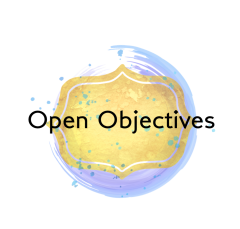Information to Share with your students regarding the Open Pedagogy Project
We will be creating an Open Pedagogy Resource with our topics and sources. We will be publishing the topics with the primary and secondary sources that you determine are appropriate to prove your thesis statement.
This means other students and people interested in history will be able to view these topics and sources online.
Future students will be able to add to your sources as they find more; your sources may also help people in other fields – for example, if a biologist is researching crops they might find sources you used for a paper on the impact of introducing corn in Africa.
Ideally, the sources you identify will be the start of a collaborative topic and resources database. You will be able to point to your contribution – include it in a resume, portfolio, or college application essay.
What will be published:
- Your name, initials, or pseudonym (your choice)
- your topic
- the primary source you select
- the secondary sources you locate
- and your thesis statement.
What will not be published:
- Your personal information
- your grades for this coursework
- your outline
- your rough draft
- or your final draft.
Where this will be published:
- The college Google site and/or an academic blog
What about copyright?
- We will share this resource with a copyright that will permit future users to remix (edit and add to), reuse, and share the materials as long as they a) do not attempt to sell or profit from your work, and b) attribute your original work to you as the author.
What Are the Topics?
This link is to a Google Sheet [insert url to your sheet] listing all the pre-approved topics and some resources for locating sources.
Sign up for the topic you want to claim – everyone should have a different topic.
If you want to write about a topic that is not on this list email or message me about your topic before submitting any work on it.
Links to Primary Sources:
Some links to help you find primary sources:
GCC Library – History Primary Sources
GCC Library – HIS102 Primary Sources
Fordham University – Internet Modern History Sourcebook
HIS102 – Primary Sources in Textbook
 Watch Video
Watch Video
User: n/a – Added: 12/18/17
Watch this 3-minute video before looking for primary sources.
Locating Secondary Sources:
It is tempting to Google a topic and use Wikipedia or web articles as sources. This can help you get a general overview of what your topic is about, but this is not the way to find appropriate sources for college-level research.
Once you have an idea of what type of information you are looking for, try these databases for articles about your topic:
JSTOR Advanced Search – check some boxes on this page in Narrow By:
- Item Type – check “Articles”
- Language – check “English” (add another language you are fluent in, if appropriate)
- Publication Date – leave blank or put in dates as appropriate; in general, 1960 to 2020 works.
- Journal Filter – check only the subject areas relevant to your topic plus related ones (generally check History, Political Science, and Sociology plus subjects related to your research.)
EBSCO Host History – search for ebooks
- if you click on “Advanced Search” you can limit the languages to English
Ask a Librarian – GCC Library
- They can help you find information related to your topic once you have done some preliminary research.
- Share the link to your primary source with them and tell them your topic
How to Write a Thesis Statement:
Creative Commons information to help students with thesis statements from The Writing Center, University of North Carolina at Chapel Hill: http://writingcenter.unc.edu/
Additional information:
https://courses.lumenlearning.com/suny-englishcomp1v2/chapter/thesis-statements/
Other Information to Provide to Students:
Rubric – be sure to share the grading rubric; grading should be transparent; students should understand the expectations.
Assignment breakdown:
I break this project into five steps:
1 Topic, draft thesis statement, and primary source (the students write this on a Google Sheet and submit it in the Blackboard Assignment dropbox.)
2 Two scholarly secondary sources (these are also added to the Google Sheet by the students, who then submit them in the Blackboard Assignment dropbox, too.)
3 Outline (submitted only in Blackboard)
4 Rough draft
5 Final draft.
